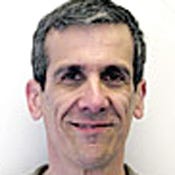British Council Gains Control Over Web Content
Centralizing Web content is expected to save the U.K. agency more than $2 million.

The British Council, a government-backed agency dedicated to connecting people around the world with educational opportunities in the United Kingdom, provides a textbook example of how centralizing content management can reduce Web site operating costs.
The council has offices in 110 countries, under the auspices of each country's consulate. When it first began advertising offers for study in the U.K. over the Web, each country took responsibility for maintaining its own Web site. The result was a hodgepodge of 240 sites scattered across the globe, with 200 HTML authors, 80 Internet service providers, and 50 media companies involved in production. Brand identity was virtually nonexistent. "Consular staff were treating the sites as their own fiefdoms," says Ian Barnes, global Web manager at the British Council.
To clean up the mess, the council implemented Open Text Corp.'s Livelink Web content-management software. Contracts for Web-site hosting, design, and hardware in individual countries were cancelled; henceforth, the sites would be hosted centrally out of a data center in Manchester, England. To date, the council has consolidated 180 of the original 240 Web sites onto the Livelink platform; the 180 sites serve up content in 40 languages, Barnes says. The consolidation effort will save an estimated $2.3 million by the end of this year.
The Livelink system employs an object-oriented approach featuring a single object (a Web-site template) and multiple instances (individual sites for each country). "The essence of content management is separating the presentation layer from the content," Barnes says. Livelink provides a template library that the consulates use to build their sites. Users simply select an icon and drag it onto the site map; they then either fill the site with standard content or develop their own, including multimedia content.
"It's a Web-by-numbers system; no HTML experience is required," Barnes says. Each country gets its own unique site, while the council maintains centralized control. Says Barnes, "While they appear to be separate Web sites, they're all firing off the same URL."
About the Author(s)
You May Also Like
How to Amplify DevOps with DevSecOps
May 22, 2024Generative AI: Use Cases and Risks in 2024
May 29, 2024Smart Service Management
June 4, 2024







